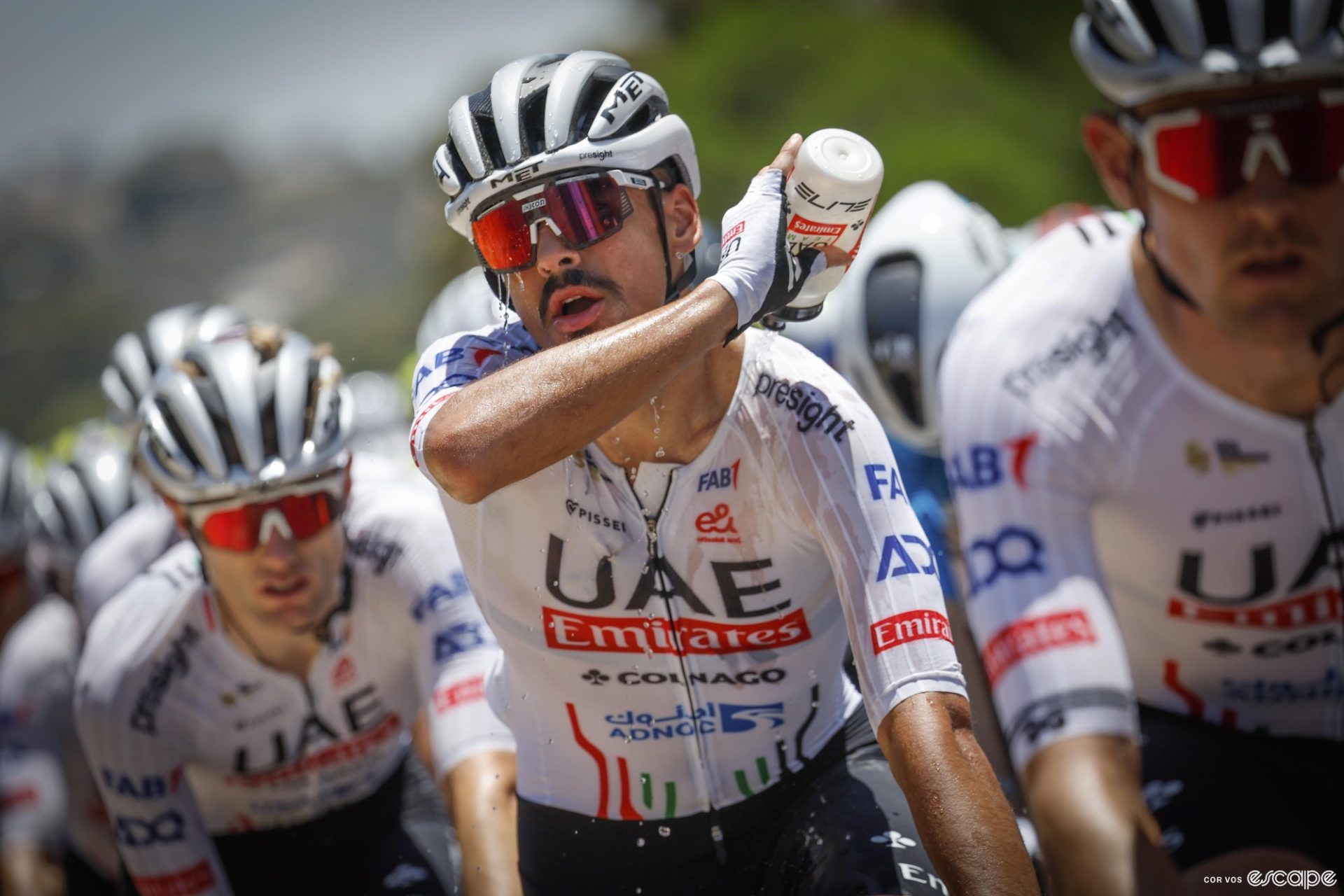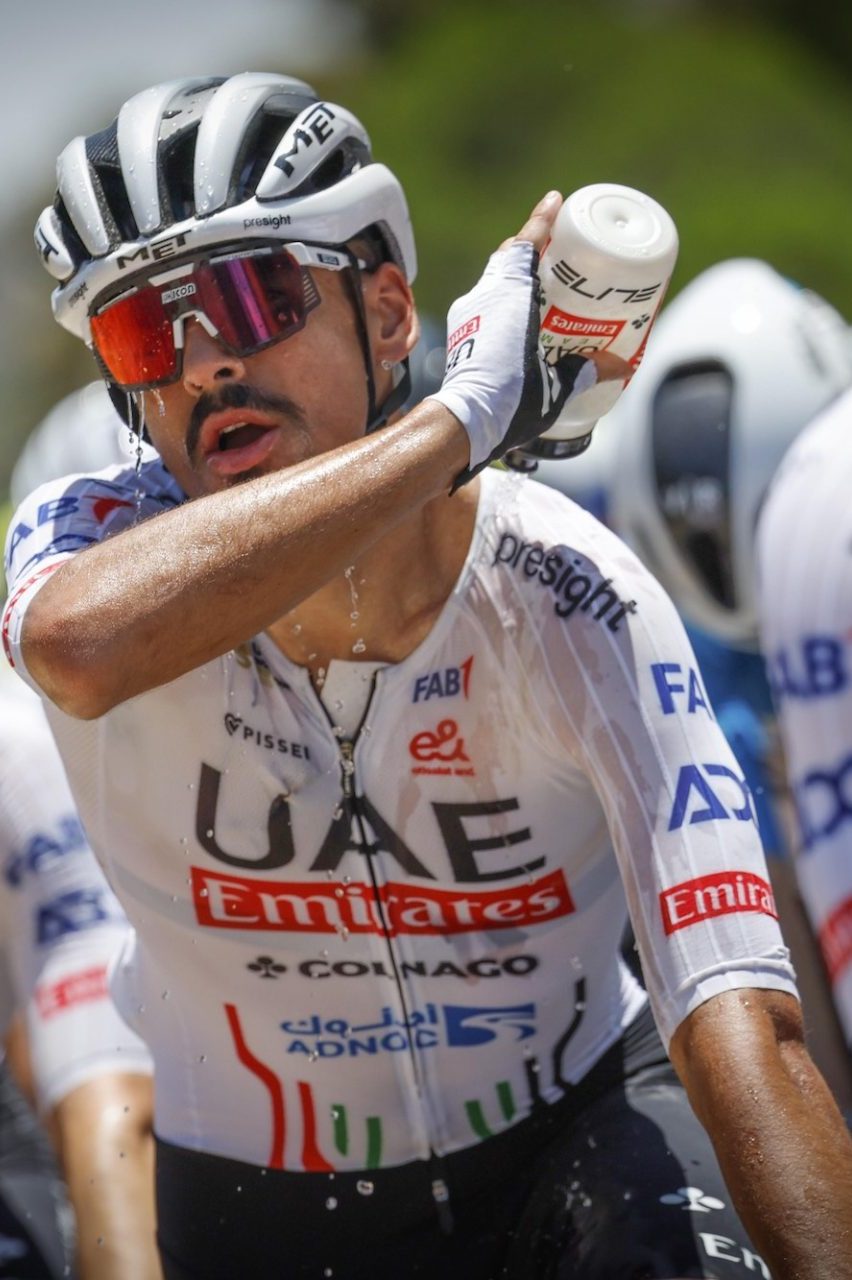On the heels of a recent meeting of the UCI’s Management Committee, the governing body has announced a new High Temperature Protocol that “aims to respond to the fact that in the coming years, road cycling competitions will be organized in increasingly severe climatic conditions, leading to a growing risk of heat-related accidents.”
Since 2015, UCI regulations have included an “Extreme Weather Protocol,” specific measures that take effect when a race is held under certain inclement conditions, like on stage 13 of the 2023 Giro d’Italia. The High Temperature Protocol, first presented to pro men’s and women’s teams last December at the annual WorldTour seminar, is intended to build on that existing framework with more nuanced wording to specifically address temperature extremes.
In the past, races set to be run under particularly hot conditions have occasionally been shortened or cancelled altogether, as has happened on extremely hot days at recent Tours Down Under. Sometimes, ad hoc rider feedback has spurred organizers to make decisions; a new protocol in place could allow riders and organizers to take a more systematic approach to any efforts to manage heat concerns.
Under the new framework, temperatures are divided across five color-coded zones (white, green, yellow, orange, and red) that come with recommended strategies for managing the health risk to those involved, enacted via an “emergency meeting” of stakeholders on-site. The full specifics of those strategies to mitigate heat danger are not yet public, but according to the UCI, the protocol “suggests countermeasures depending on the zone of the climatic condition (for example moving start zones to shaded areas, providing teams with cold drinks and crushed ice during the race, increasing the number of refueling motorbikes, changing the start time or possibly neutralising sections of the race).”
In any case, the UCI notes the above mitigations are suggestions, not dictates, and attendees of the emergency meeting at the event will be empowered to make any “final decisions” on how to address the situation.
The new system will apply to men’s and women’s WorldTour races and races on the UCI ProSeries circuit, to be “introduced during the first part of the season.” Exactly what constitutes the “first part of the season” was left unclear but with multiple WorldTour events already in the books for 2024 – including days at the Tour Down Under that reached into the upper 30s Celsius (the upper 90s in Fahrenheit) – that introduction will assumedly be coming soon.
Fortunately, temperatures for the Middle East races that started last week with the AlUla Tour and continue this week with the Tour of Oman look relatively moderate, which means the new protocol may not be employed until the Northern Hemisphere’s late summer. For UCI races outside of those aforementioned series, other heat management protocols are set to be announced later this year.
What did you think of this story?


